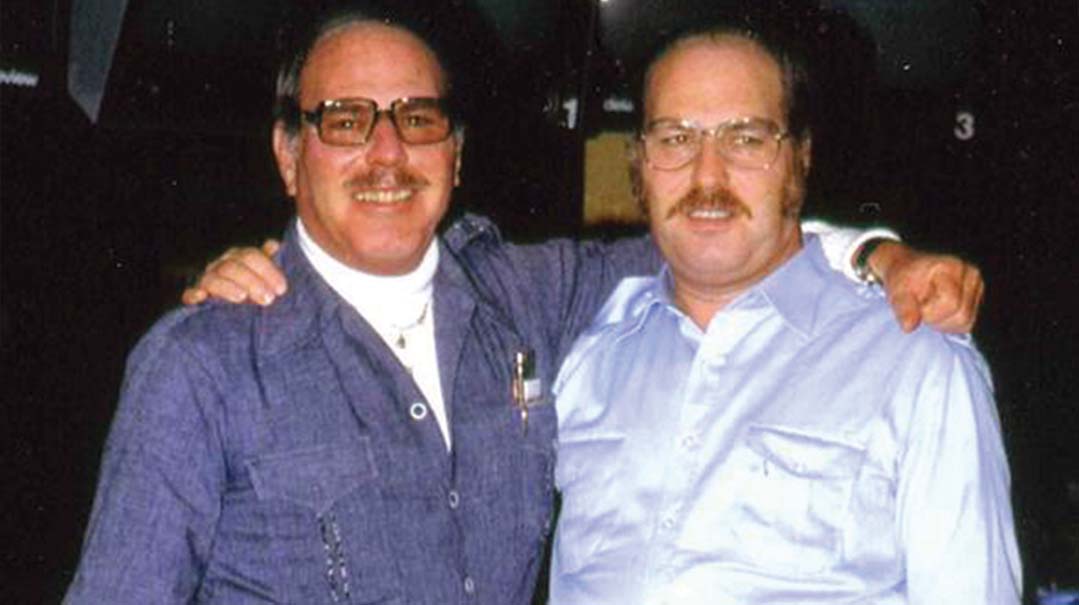Twins Apart

Jack Yufe and Oskar Stohr were born identical twins, yet one brother was raised as a Jew, the other a member of Hitler Youth.

I
t could have been a plot for a blockbuster film: Identical twins separated after birth — one growing up as a Nazi, the other raised as a Jew. Yet the true story of Jack Yufe and his twin brother Oskar Stohr were not just about the radically different worlds in which they grew up, but about their similarities in nature despite the incongruence in nurture.
During their first meeting, when the twins were 21, they discovered they looked alike, dressed alike, walked alike, loved the same spicy foods, and had the same hot temper, fiercely competitive nature, and various quirks.
“They were a great example of how twins, no matter where each grows up, are in fact very much alike,” Professor Nancy Segal, who studied the brothers in the 1980s as part of a 20-year research project on separated twins, told Mishpacha.
Yufe passed away November 2015 at age 82, generating a renewed interest in one of the world’s most unusual cases of separated twins.
Jack and Oskar were born in January 1933 in Port of Spain, Trinidad, to a Romanian Jewish father and a German Catholic mother. The parents split up six months later. Their mother, Leisel Stohr, returned to Germany with Oskar and a two-year-old sister during the years the Nazis rose to power. Like his fellow students, he greeted the school principal with “Heil Hitler,” and was warned by his grandmother to never let on that his father, Joseph, was Jewish. As an act of survival, Oskar joined the Hitler Youth movement like all the other young boys his age (he was just 12 when the war ended). Jack remained in Trinidad with his father, Joseph Yufe, as a British subject.
What’s in a Name
In her 2005 book, Indivisible by Two: Lives of Extraordinary Twins, Professor Segal explains that the twins’ father chose to take Jack with him because he was easier to raise; Oskar, in contrast, was a loud and frequent crier — a tiny difference that had an incalculable impact on their lives. While Jack grew up in Trinidad, far away from war and worry, Oskar grew up under the Nazi regime. While his mother worked, he was cared for by his grandmother, who was quite displeased by the fact that her grandchildren had a Jewish father. When he was eight, Oskar once heard something in school about “Juden” and asked his grandmother what the term meant. She responded by ordering him never to utter the word again.
But ignoring his Jewish roots didn’t help Oskar or his sister Sonia. Oskar was once summoned to the principal’s office at school. After Oskar saluted “Heil Hitler,” the principal asked him about the origin of his surname. “Isn’t Yufe a Jewish name?” he asked.
“No,” Oskar said, quickly improvising a response. “It’s French; it’s pronounced yu-fei.”
When Oskar was a little bit older, an officer with the Nazi registry discovered the brother and sister who were children of a Jewish father and were being raised as part of the Aryan race. Gestapo officers were dispatched to their home, and Oskar and Sonia, who had been raised and thought of themselves as devout Catholics and Germans, were taken into custody and scheduled to join a large group of Jewish children being deported to the death camps. The two children, who had been raised with a burning hatred of Jews, suddenly found themselves labeled as part of the Jewish people.
Oops! We could not locate your form.






